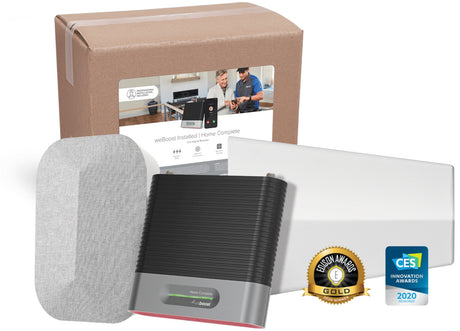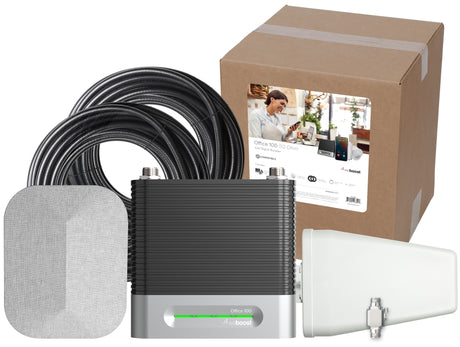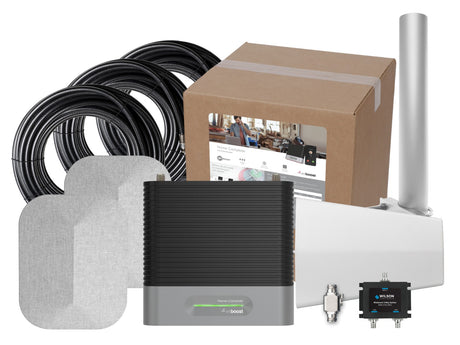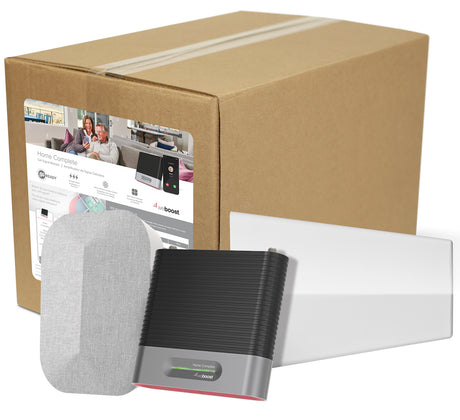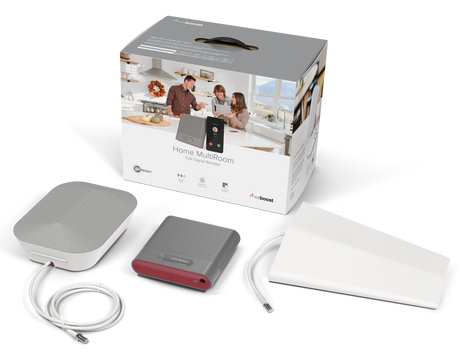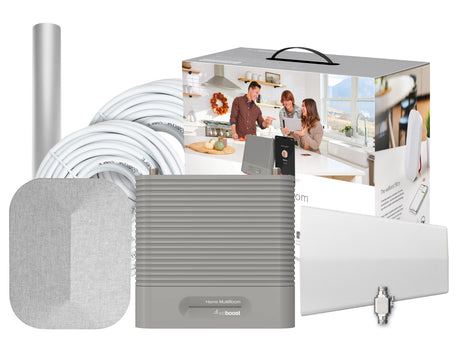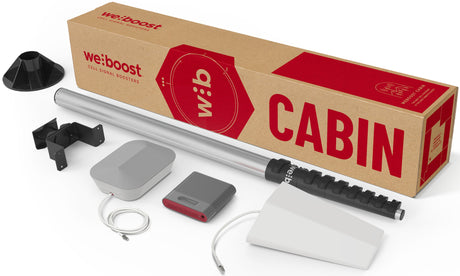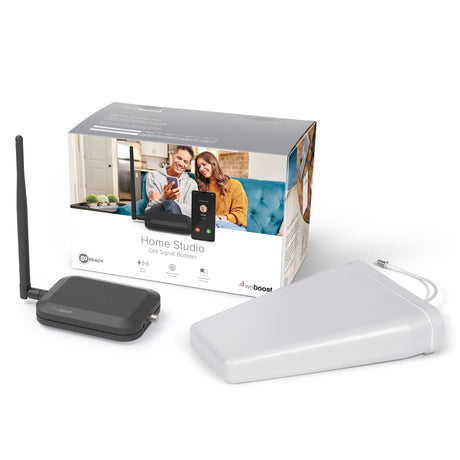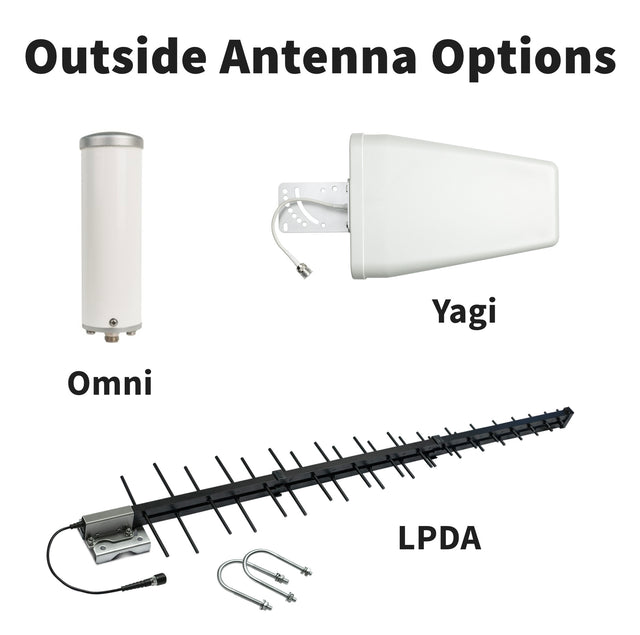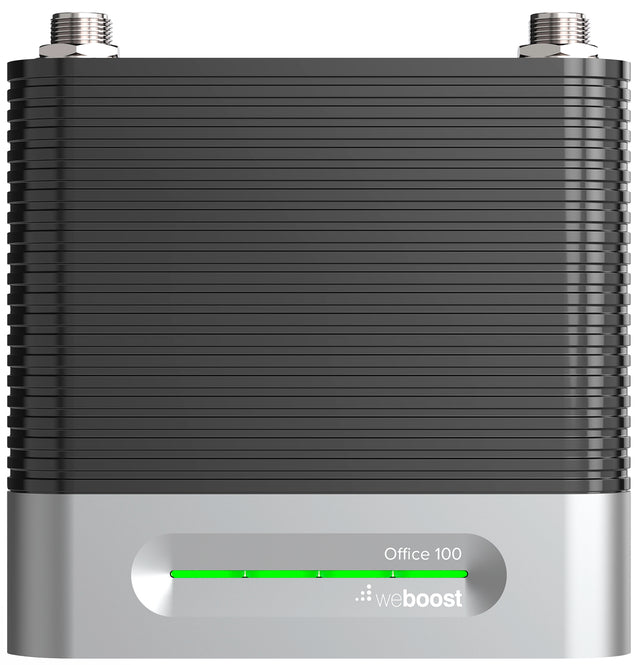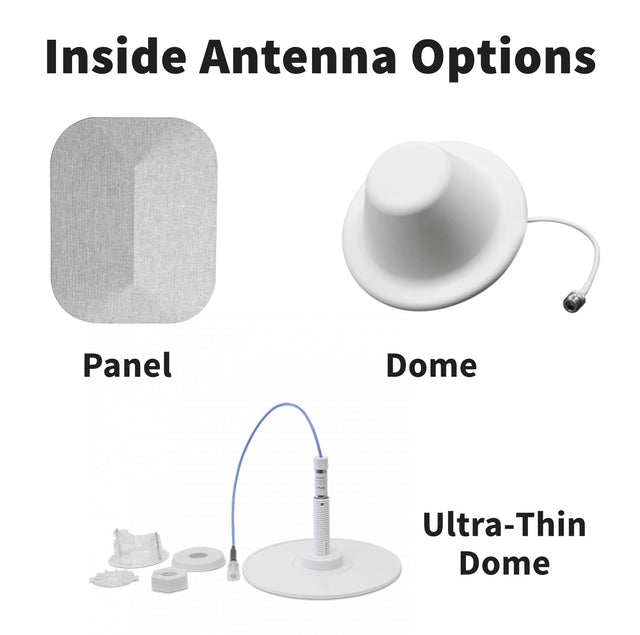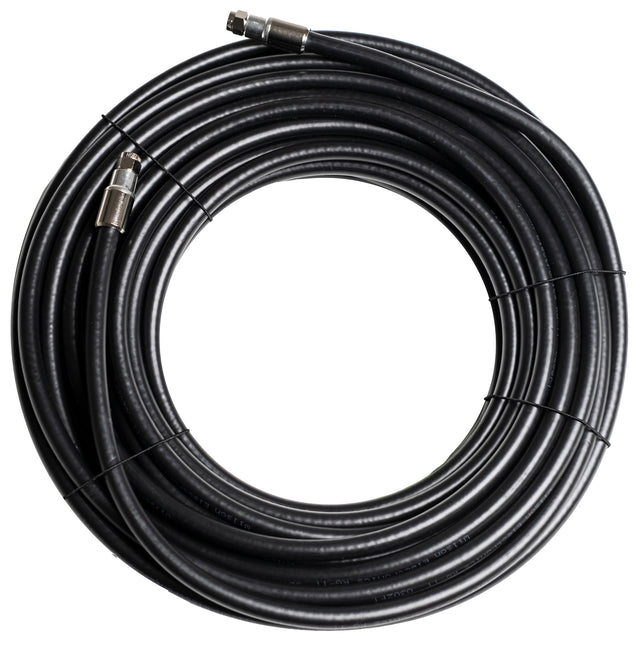-
weBoost Installed | Home Complete - Includes Professional Installation (474445)
$1,499.99Unit price /Unavailable -
-
-
-
weBoost Installed | Home Complete - Includes Professional Installation (474445)
$1,499.99Unit price /Unavailable
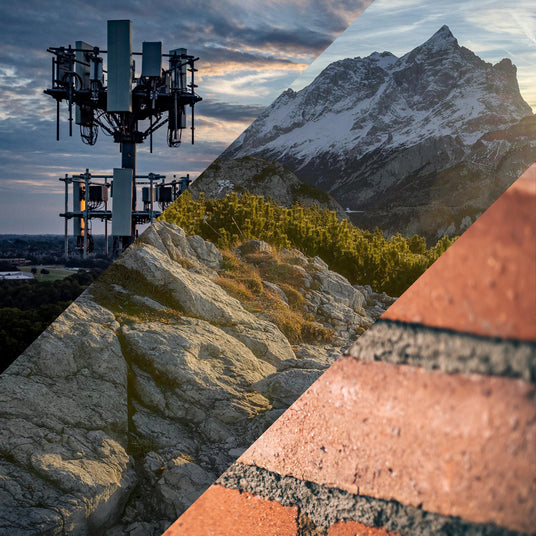
Why You Have Bad Cell Signal in Your Home
People wonder why they have bad cell signal even though they pay a lot to the cell carriers. Here's a quick explanation of what can happen between the carrier's cell tower and your phone that can result in bad cell signal.
- Cell Tower Distance: While there are many, many cell towers out there, sometimes the tower for your carrier may not be in the best position for your home. The further it is from your house, the weaker the cell signal is going to be when it reaches you.
- Obstacles in the Way: Even if you have a close cell tower, a major obstacle in the way can partially or completely block that signal from reaching you. Things like buildings, hills, mountains, and trees can block cell signal or at least cause it to bounce erratically, resulting in weak or fluctuating signal in your home.
- Building Materials: Finally, the actual materials (concrete, brick, block and metal) that make up your home can block signal from penetrating into your house. Additionally, energy efficient materials, like window coatings, also are major culprit when it comes to blocking signal.
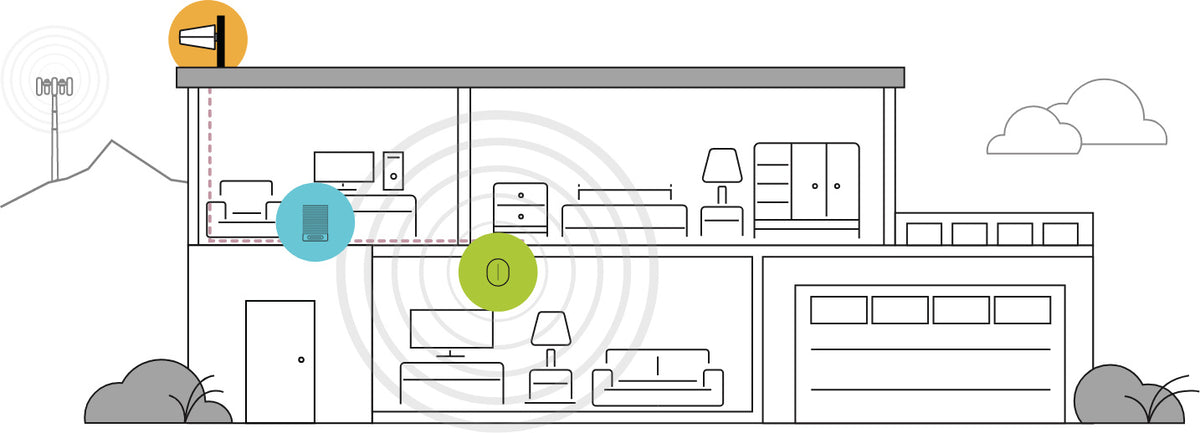
How a Cell Phone Booster Works
A cell phone booster is designed to solve all of the problems listed above and provide you with strong, reliable cell signal.
Click the circles above to get a quick overview of the different components and how they work together to boost signal coming both from the cell tower and from devices in your house.
Here's an overview of how it works:
A cell phone booster is made up of 3 major components: the outside antenna, amplifier, and inside antenna. These components are connected together with low-loss cable.
- The outside antenna, which is typically mounted on the roof, receives the cell signal from a local cell tower and passes that signal over a cable to the signal amplifier, which is located inside the building.
- The amplifier boosts the cell signal and then passes it over another cable to the inside antenna(s), where it's broadcast out to the mobile devices in the area.
- When a mobile phone or device makes a call or sends data, the signal goes through the booster system, is amplified, and then broadcast back to the distant cell tower in a much more powerful manner.
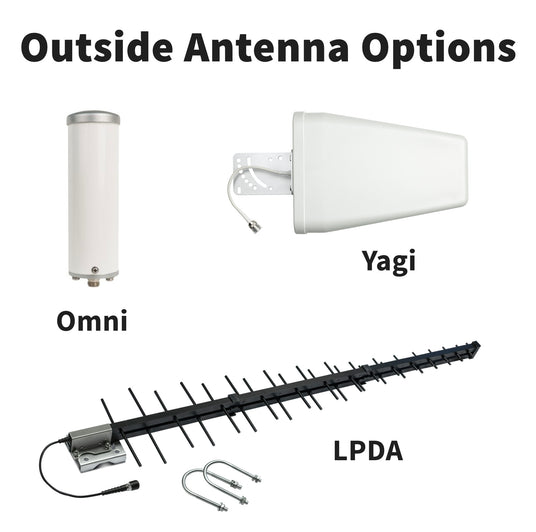
Outside Antenna Options Explained
Choosing the right outside antenna is critical to getting the best performance from your signal booster. Here's a quick overview of the different outside antenna options that are available for home boosters:
- Yagi Directional Antenna: Great for areas where you have a weak existing outside signal. With 10 dB of gain, it's second in power only to the LPDA and it offers a 75 degree view of the horizon so you don't have to be as pinpoint accurate.
- Omni Antenna: A good choice for areas with hilly or mountainous terrain and there’s no clear line of sight to a cell tower. Provides 4 dB of gain and captures signal in all directions, so it can still receive bouncing or reflected signals. Will provide the least amount of inside coverage, but is the only antenna that can handle reflected signal.
- High-Gain LPDA Antenna: Designed for remote locations with very weak signal. It offers 11–13 dBi of gain (making it the strongest of the 3 antennas) but requires direct line of sight to the distant cell tower for best performance. It's the hardest to aim because it's so precise, but it will give you the most coverage once it's dialed in.
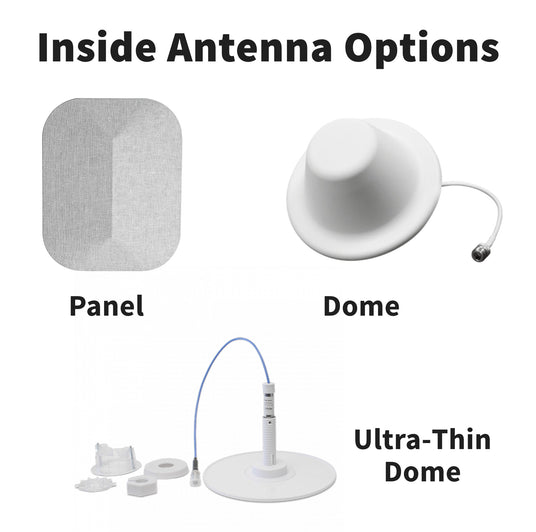
Inside Antenna Options Explained
Choosing the right inside antenna is important from an ease of installation and an ability to cover the area you need. Here's a quick overview of the different inside antenna options for home boosters:
- Panel Antenna: This is a directional antenna that mounts to a wall, ceiling or floor and focuses signal in one direction. It's great for targeting specific areas or covering multiple floors. It offers higher gain (7-10 dBi) than dome antennas and works well for multi-story homes, long narrow spaces, or locations with high ceilings. This is typically the antenna we recommend for homes.
- Standard Dome Antenna: A ceiling-mounted antenna that broadcasts signal in all directions. It's a good option for spaces with drop ceilings where cables can be run above the tiles. With an average gain of 2-5 dBi, it’s an economical choice.
- Ultra-Thin Dome Antenna: A sleek, low-profile version of the standard dome, designed for spaces where aesthetics & performance matter. It delivers more power (4-6 dBi) and is ideal for homes where the antenna needs to blend seamlessly with the ceiling. The cables need to be run above the ceiling for the ultra-thin dome as well.
How Many Inside Antennas do You Need?
For most homes, one antenna typically covers 750 to 1,500 square feet, while in larger, open areas without walls, an antenna can cover 1,500 to 2,500 square feet. Use this as a basis for determining the number of antennas you need.
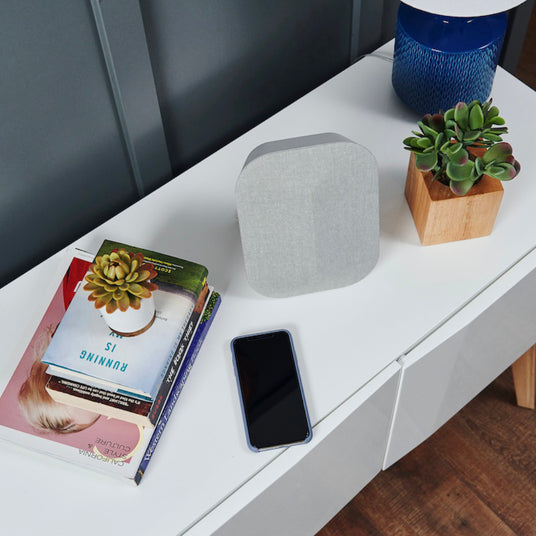
Expert Tips for Selecting and Installing a Signal Booster in Your House
So you know what's causing your signal problems and how a booster can fix that for you, but what are the things that you should know when choosing your new booster and ultimately installing it? Here is a list of tips that we've compiled after working with thousands of customers to get better cell signal in their homes.
- Coverage is calculated based on the strength of the incoming cell signal multiplied by the boosting power of the amplifier. If you have a very weak existing outside signal, you'll need a very powerful amplifier to get the coverage you want, and even then you may need multiple boosters.
- Installing a signal booster is not easy. You have to climb on the roof, drill a hole (sometimes) into the attic and run cable. If you're handy, then you can definitely install one yourself, but if that sounds like a lot to you, then choose a booster that includes professional installation.
- The easiest way to mount the equipment is to put the amplifier in the attic (as long as you have power there) and then choose a panel inside antenna and lay it face down on the floor of the attic. It will broadcast signal down through the floor and should cover up to 2 floors in your home with boosted signal. If your home is very large, you may need more than one inside antenna.
- We recommend adding a lightning protector to your setup, as it will protect any electrical surges that may run down the antenna cable and fry your amplifier. It doesn't happen often, but when it does, you'll be happy your protected your investment.
- The biggest thing that will determine the success of your booster is the placement and aiming of the outside antenna. Spend more time on this to find the location with the best cell signal and then make sure you aim your outside antenna (if you're using a directional antenna) for the strongest and most reliable signal. What goes in the outside antenna is amplified inside the house.

